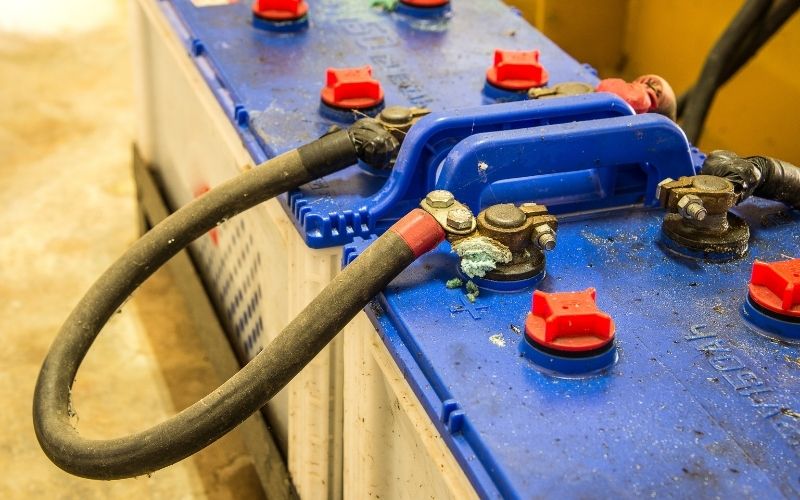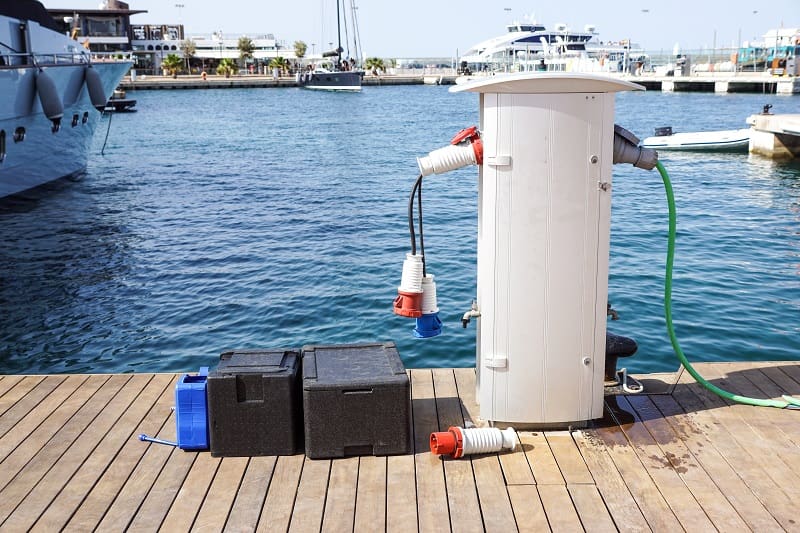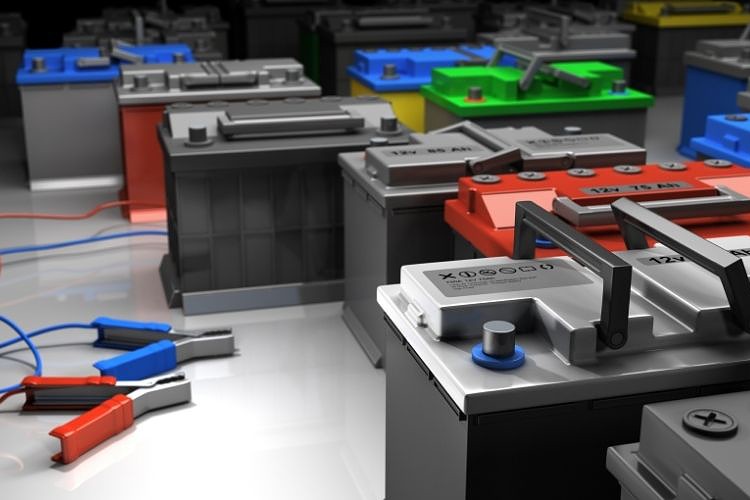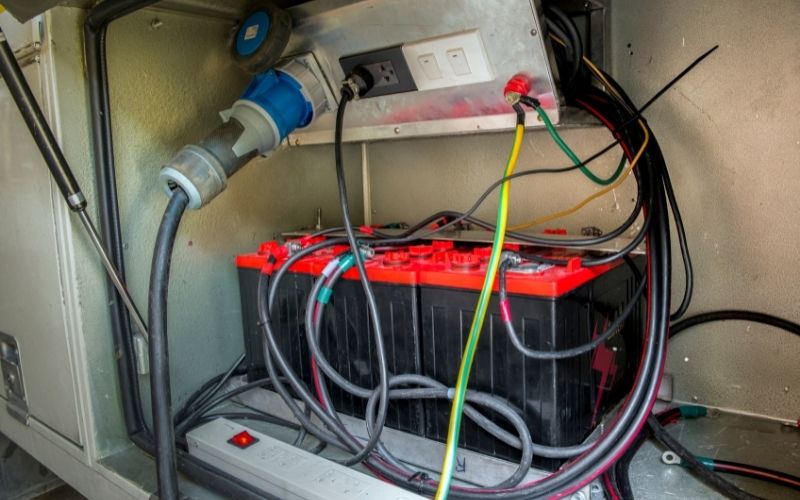To prevent a boat battery from dying and leaving you stranded in the middle of a lake, it’s important to understand how often you should charge a marine battery.
A marine battery should be charged right after you use it, and if you aren’t actively using it the general recommendation is once a month. With that said, the frequency of charging your battery may fluctuate depending on a variety of factors that we’ll disclose to you below.
Also, you should know that it is possible to overcharge a marine battery and cause it to explode. To prevent an overcharged battery, we will explain a few ways how you can maintain your marine battery.
Table of Contents
How Long Will a Marine Battery Hold a Charge?
Unfortunately, there isn’t an exact amount of hours or days a marine battery can hold a charge. Many factors come into play that affects the length of your battery charge.
There are a few factors that can affect how long a marine battery can hold a charge:
- Battery age and how long it has been in use
- Temperature and humidity in the atmosphere
- Battery load and charging capacity
- Incorrect charging
Battery age

A newer battery will hold a longer charge than an older battery. As marine batteries age, their capacity to hold a charge reduces, which means you will need to charge them more often.
The older the battery and the longer it’s been in use, the more likely the plates inside the battery will have some wear. If you see brown sludge in the bottom of the battery, then you can conclude it has been in use for a while
The length a battery can hold its charge for will lessen as the darkness of the brown sludge increases. If you want to get the most charge from your marine battery, then it may be time to replace it with a new one.
Temperature and humidity

Marine battery temperature affects the condition of the plates inside it which can either cause degradation or loss in the length of a battery charge. Cold temperatures affect a battery as they charge, while hot temperatures affect a battery as it runs.
Heat affects the length of time a marine battery will hold its charge. According to Battery Man Guide, a 50-degree Fahrenheit (10-degree Celsius) rise in temperature will cause a marine battery to lose half of its intended life.
Battery load and capacity

Larger marine battery sizes will store more energy compared to smaller battery sizes. This means that a larger marine battery can take a higher load and hold a longer charge.
For a fully charged deep cycle lead battery at 70 degrees Fahrenheit (21.1 degrees Celsius), you would divide the ampere-hour rating by the load in amps to calculate the approximate length of a marine battery charge.
Marine-ectronics.net provides a fantastic example of this equation. A new 72-ampere-hour marine battery that has a 10-amp load will last approximately 7.2 hours.
Incorrect charging

Incorrect charging of a marine battery can lead to damage that affects its ability to hold a charge.
Undercharging a battery will form sulfates on the battery plates over time, leading to hardening which causes an issue in power flow from the battery. This makes the battery work harder to push out more power, which in turn affects the battery’s charge.
Now on the opposite end of the spectrum is overcharging a battery. An overcharged battery causes electrolytes to break down and release hydrogen gasses that can cause a serious explosion. Needless to say, overcharging a battery will also affect the battery charge.
If you are worried about overcharging or undercharging a battery, then check out our article, “What Voltage Should a Marine Battery Read When Fully Charged?” This article can help you balance the proper voltage to get the most out of your battery’s charge.
How Often Should You Charge Your Marine Battery?

The frequency of charging your marine battery will depend on how often you use it. People using their boats daily should charge their marine battery after every use.
But what if it’s the off-season or you take your boat out only every few months? If you are storing a marine battery or only take your boat out a few times a year, then you should charge your marine battery at least once a month.
In general, you want to keep your marine battery fully charged no matter how often you use it. The reason for this is to extend the life of your battery and prevent the plates from wearing.
Another interesting fact is that you will lose battery life, or the length of a battery charge when the battery doesn’t stay fully charged. So keep that battery at full charge!
If you are worried about forgetting to charge your marine battery, then you may want to buy a “smart” battery charger . Smart battery charges allow your battery to stay plugged in and it will automatically resume charging when it senses the battery voltage dropping.
3-stage smart battery chargers come with a trickle charge feature to let your battery continue to charge during the off-season and when you aren’t using it. Now with that said, you should continue to check your marine battery each month to make sure it is still fully charged.
Can You Overcharge a Marine Battery?
Put simply, yes, you can overcharge a marine battery . Overcharging a battery will cause it to dry out the electrolyte and damage the battery.
When you’re charging your boat battery and you hear it hissing or bubbling, it’s a sign that the voltage is too high during the charging process.
Here are some reasons why a boat battery may overcharge:
- Using a charger with more amps than it can handle
- Using a defective charger
- Wrong alternator for the battery size
- Using a non-smart charger that is not microprocessor-controlled
- Not adjusting charging levels based on ambient temperature
Below we’ve included a table to help you with safe charging ranges for the different types of marine batteries.
Safe Charging Ranges for Marine Batteries
| Battery Type | Safe Range for Battery Charging |
| Flooded battery (wet cell) | 13.8 – 14.7 volts |
| Gel battery (sealed) | 13.8 – 14.1 volts |
| AGM battery (sealed) | 14.4 – 14.6 volts |
How Do You Maintain a Marine Battery?
Maintaining a marine battery is not difficult. The problem is when we forget about them or become lazy with our batteries.
Here are some tips on what you can do to maintain a marine battery:
- Recharge the battery immediately
- Check the battery charge once a month
- Keep the battery at the right temperature
- Keep the battery clean
- Fill and keep the battery at proper water levels
- Keep the battery compartment well-ventilated
- Make sure there is a lid on any battery box or boots on the battery terminals
- Give your battery a cooling-off period
- Perform periodic equalization
Not all types of batteries require you to refill them and make sure they maintain proper water levels. AGM batteries , for example, are sealed batteries that never require watering or refilling.
Whether you are storing your marine battery or actively using it, you should keep the battery in a well-ventilated compartment or area. Overcharged lead-acid batteries expend gasses that need to be ventilated to prevent a battery explosion.
It’s best to let your battery rest or cool off between periods of use and re-charging. If you try to use the battery while it’s still warm, you might create grid corrosion from the heat and burn your battery out.
To keep cells balanced in a deep cycle marine battery, you’ll need to perform periodic equalization. This will prevent any dip in the cell’s regularity which leads to instability or battery failure.
Keep track of your battery maintenance with a Boater Maintenance Log Book . This way you can track how often you check your battery.
Conclusion
As a rule of thumb, a marine battery should be charged after every use or checked once every 30 days if it’s in storage. Keeping up with your battery maintenance will increase the length of time a battery can hold its charge.
Consider buying a smart battery charger to help you stay on top of regular battery charging. We hope this article has been proven valuable to you and we wish you all the best!

Amazon best-selling author & coauthor, Misty Compton is an outdoor enthusiast, raised on water sports, fitness, and writing. CEO of two companies, Daggerwing Publishing House LLC and Organized Otter Administrative Support LLC, she writes and edits content providing great reads, and assists companies remotely by helping them get organized.

